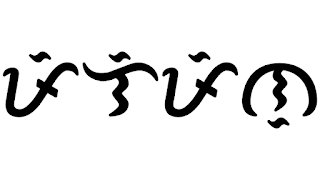Filipino surnames today are Spanish in origin due to the Clavería decree of 1849, which forced Filipinos to adopt standardized surnames from a catalog (the Catalogo Alfabético de Apellidos).
The Clavería Decree of 1849 (officially known as the Catalogo Alfabético de Apellidos) was an order issued by Governor-General Narciso Clavería y Zaldúa on November 21, 1849, in the Philippines during Spanish colonial rule.
📜 What was it?
It was a decree that standardized surnames among the native population of the Philippines. Before this, many Filipinos either had no surnames, shared common Christian names, or used native naming systems that were inconsistent and confusing for colonial administration.
🎯 Why was it implemented?
-
Colonial control – The Spanish government needed a better way to identify, tax, and manage the native population.
-
Avoid confusion – Many Filipinos had identical first names (e.g., many “Juan” or “Pedro”) without family names, making census-taking and record-keeping very difficult.
-
Recordkeeping efficiency – It made it easier to administer church sacraments, civil records, land ownership, and taxes.
Colonial control – The Spanish government needed a better way to identify, tax, and manage the native population.
Avoid confusion – Many Filipinos had identical first names (e.g., many “Juan” or “Pedro”) without family names, making census-taking and record-keeping very difficult.
Recordkeeping efficiency – It made it easier to administer church sacraments, civil records, land ownership, and taxes.
📘 What did the decree do?
-
A master list called the “Catálogo Alfabético de Apellidos” was created. It included Spanish, local, and Hispanized surnames—organized alphabetically.
-
Filipino families were assigned surnames from this list. Sometimes by location, sometimes alphabetically by village or barrio.
-
Some native and noble families were allowed to keep their indigenous surnames, especially if they had historical or social significance (like Gatdula, Lakan, Dimalanta, etc.).
A master list called the “Catálogo Alfabético de Apellidos” was created. It included Spanish, local, and Hispanized surnames—organized alphabetically.
Filipino families were assigned surnames from this list. Sometimes by location, sometimes alphabetically by village or barrio.
Some native and noble families were allowed to keep their indigenous surnames, especially if they had historical or social significance (like Gatdula, Lakan, Dimalanta, etc.).
📌 Key Results:
-
Most Filipinos today have Spanish-sounding surnames (like Reyes, Cruz, Santos, Garcia, etc.), but they do not necessarily have Spanish ancestry.
-
Native surnames became less common, but a number survived through indigenous nobility or rural isolation.
Most Filipinos today have Spanish-sounding surnames (like Reyes, Cruz, Santos, Garcia, etc.), but they do not necessarily have Spanish ancestry.
Native surnames became less common, but a number survived through indigenous nobility or rural isolation.
🧠 Fun fact:
This is why Filipino and Latin American surnames often overlap, even though they come from totally different regions and ethnicities.
If you want, I can pull up some examples from the actual Catálogo or show how families were assigned surnames based on town! Comment below for and let me know your town.





















0 Comments
Hi! Thank you for dropping by. Please leave us a comment.